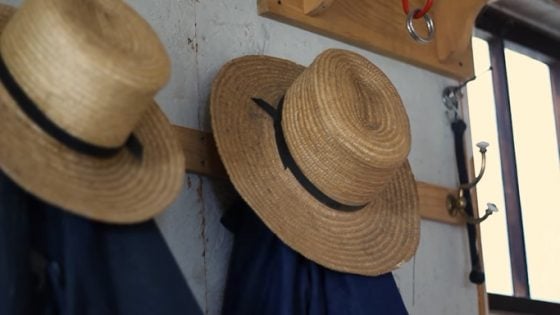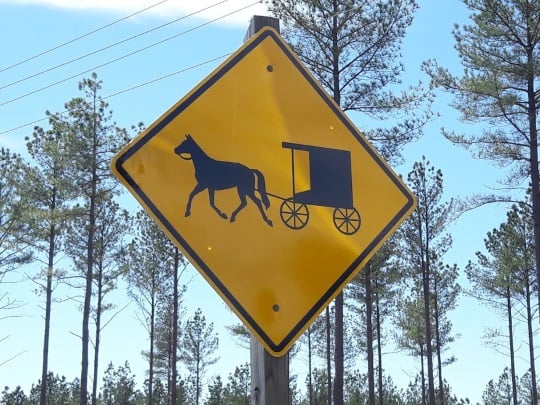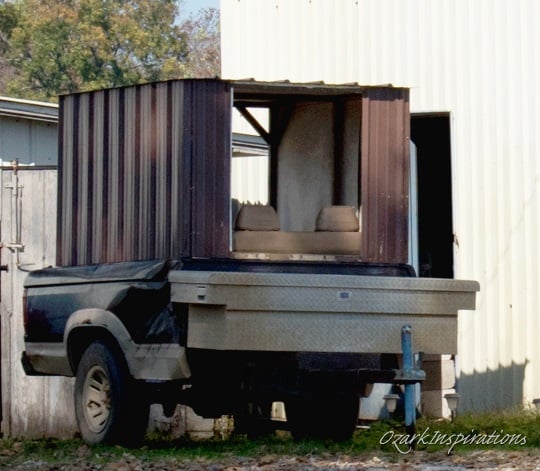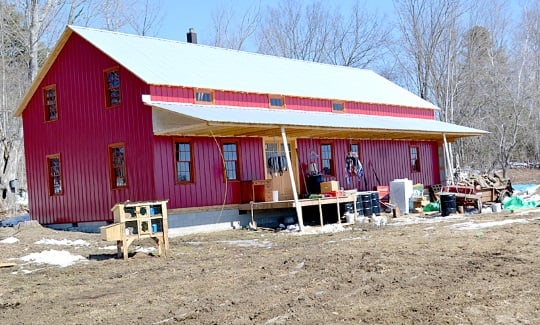2023 Amish Population: Five Years & 50,000 More Amish
The annual horse-and-buggy Amish population figures have been released by the Young Center at Elizabethtown College. The total Amish population is estimated at 383,565 people. That breaks down to 377,275 in the United States, 6,100 in Canada, and 190 in South America.
And of course the count continues to steadily rise. If we look at the numbers from just five years ago, the Amish population has increased by over 50,000 since then.

The number of communities has unsurprisingly also grown. In 2018, we had 549 settlements. Today there are nearly 90 more, with a total of 638 Amish communities. The two main drivers of this growth – a very high birthrate, and most Amish youth deciding to join the church – haven’t changed.
A few noteworthy points from this year’s figures:
- One of the two South American countries claiming an Amish presence can no longer do so. The community in Argentina has disbanded, with some of the group moving to Bolivia, some to the US, and some remaining, but no longer a part of the New Order Amish fellowship. If you don’t know the story, here’s more on how there came to be Amish south of the equator.
- In March we posted about the seemingly impending exodus of Amish from their sole South Dakota community. Amish founded the community at Tripp, but with multiple Amish homes going on the market, it was reported that the community was on the way out. In the latest figures, we see that there is not only still a presence in the area – but also that a second South Dakota settlement has been added. That may not mean that the Tripp community will remain, but with a second community the Mount Rushmore State will not be disappearing from the Amish map after all.
- There are now close to 3,000 Amish church districts. Amish churches are small in size, typically consisting of 25 to 35 families living in close proximity. The Amish keep their churches small, emphasizing close-knit community, and dividing them when they exceed roughly 125-150 people.
- No new states were added to the Amish list, unlike last year which saw the addition of New Mexico. Amish have a presence in 32 states, four Canadian provinces, and a single community in Bolivia.

You can find the Amish population profile, the total Amish population and state figures, and ten-year growth trends on the Young Center website. You’ll also find the very handy county and state list showing individual communities, their size and year of founding.
It’ll still be some while til we can say with certainty when the Amish population might hit one million people. But the trend keeps heading full speed ahead in that direction.








I read through the county and state list a few days ago and was surprised to see Tripp, South Dakota on the list. I wonder what’s going on with that community? Any info on the new South Dakota settlement Erik?
I’ll see what I can find out but I just assumed with that that not all of the families had managed to sell their homes and move at the time of the list publication.
Slow but steady
This increase of 10,000 represents a 2.66% growth rate, which implies a doubling time of 26.5 years. Slower than the average but it’s to be expected – there was one year the Amish got 6% growth rate, which would be a 12 year doubling rate if held steady!
The maths for those interested
383,565 – 373,620=9,945 net growth
9,945/373,620=2.66% percentage net growth this year
383,565*1.0266^26.5= 769,081(roughly double the 2023 Amish population in 26.5 years if this growth rate remains)
I looked at the youngstown survey, isn’t it a bit strange that Minnesota had the EXACT same number of people as last year? they went from 5,210 (2022) to 5,210 (2023) that seems a bit unlikely, they record changes as small as 5 people, yet they landed on the exact same number? It looks like a survey error.
Hi Erik,
Thank you for the updated Amish community county/state list. My daughter is attending college in Maine and I look forward to explore Unity the next time I am traveling up that way. I researched a little bit and there is an Amish Community Market (donuts on Wednesdays!) and also a business called the Amish Charcuterie.
Also, I want to tell you that I miss your YouTube channel posts!!
Mary Ann
Thank you Mary Ann! I hope you have a good visit. I also miss the YouTube videos, hoping to start again soon.
Thanks, Erik, for alerting us AA readers each year when the Young Center updates its Amish population statistics. It must be an enormous task for the Young Center and I appreciate the work they do.
Regarding the Tripp, South Dakota settlement — In the July 5 edition of The Budget newspaper, the scribe from the Tripp Amish settlement sent in news from the Tripp settlement that seemingly reported about the remaining five families moving out. Four had already moved (one to Bethany, Mo., two to Granton, Wisc., and one to Waverly, Kansas). His own family was also planning to move to Granton, Wisc. I verified with staff of the Young Center that the settlement is no longer, and the reply was that the statistics as reported on the Young Center Amish Studies website were gathered before the last families moved out (just as Erik suggested).
Thank you for this update Al.